The week at a glance
- Swinhoe's Storm-petrel again on Fair Isle
- Ireland's first Lesser Sand Plover in County Cork
- Influx of Two-barred Crossbills to the Northern Isles
- Bridled Tern briefly in Fife
- Galley Head scores a hat-trick of Fea's-type Petrels on 31st as Mizen Head claims a Wilson's Storm-petrel
- Cory's and Great Shearwaters appear in numbers
A somewhat cooler week with more changeable weather conditions saw no great let-up in the remarkable pace of the summer. Granted, the week's highlights were essentially a re-run of the previous week, but that took nothing away from the excitement and magnitude of their respective occurrences.
From a British perspective, the week's headlines were once again provided by Fair Isle's Swinhoe's Storm-petrel which, like a number of its predecessors trapped on storm-petrel ringing sessions around northern Europe in summers gone by, made a repeat visit to the island a few days after its initial discovery. This time, though, the bird was trapped at around 01:55 on Saturday 27th and happily was seen by all (though warden David Parnaby was unfortunately off-island — here's hoping it's back for you again before the summer's out, David!).
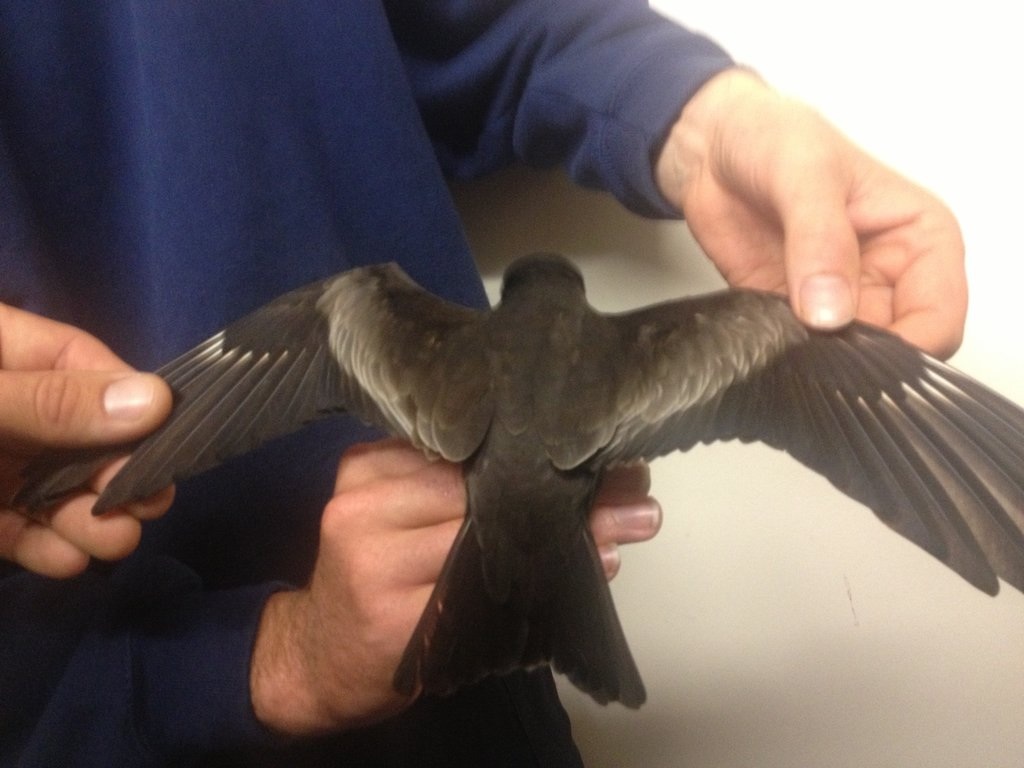
Swinhoe's Storm-petrel, Fair Isle, Shetland (Photo: Kieran Lawrence)
But, in terms of the rarity stakes, the reappearance of the mongolus Lesser Sand Plover, last seen at Lossiemouth on 16th July, topped the bill. Ireland has never previously claimed a sand plover of either species, so the discovery of a bird at Pilmore (Cork) during the evening of 27th had many an Irishman excited. It quickly turned out to be the rarer of the two, lingering until dusk and throughout the next day until it was last seen at around 19:30 on the Sunday evening. Excellent photos taken on the Sunday morning confirmed it as the Moray/Nairn bird, with the grey flank markings identical. After moving 440 miles SSW in eleven days, where is next for this most stunning of plovers?

Lesser Sand Plover, Pilmore, Cork (Photo: Victor Caschera)
Lesser Sand Plover, Pilmore, Cork (Video: Aidan G. Kelly)
The summer's Two-barred Crossbill influx took a more familiar pattern as the Northern Isles — and in particular Shetland — dominated the week's records. Though a female was found in Redlands Wood (Surrey) on 31st and Norfolk held on to at least four (Holkham on 25th, still at Kelling to 27th and at least two still at Lynford Arboretum on 29th), Shetland stole the show with at least 32 seen during the week. Fair Isle kicked things off with eight (including two males) on 26th, before a further eight arrived across the archipelago on 27th, including three at Tresta (Mainland) and twos at Halligarth (Unst) and on a vessel 45km west of Mainland (one lingering there to 31st). Belated news came of one at Trondra on 23rd before two graced Sumburgh Head and a male arrived at Garths Ness on 28th. Three were discovered on Foula on 29th with five at the Loch of Voe on 30th, rising to seven by 31st. Singletons were at Sandwick (Mainland) and Baltasound (Unst) late on. Orkney joined the party with two (1 male) in Stromness on 30th–31st.
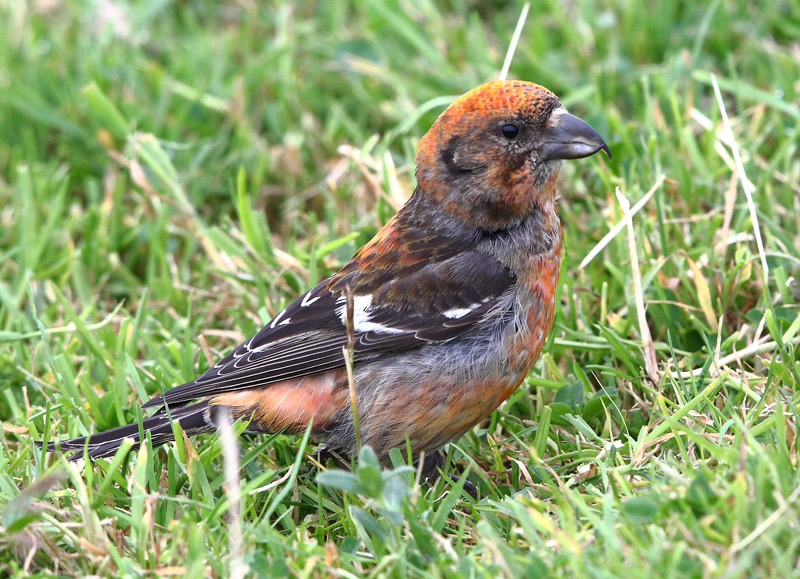
Two-barred Crossbill, Garths Ness, Mainland, Shetland (Photo: James Wood)

Two-barred Crossbill, Sumburgh, Mainland, Shetland (Photo: James Wood)

Two-barred Crossbill, Halligarth, Unst, Shetland (Photo: Brydon Thomason)
Seawatching picked up rapidly during the week as a low pressure system brought a reasonable southwesterly blow to the southwestern approaches on 31st. Observers at Galley Head (Cork) enjoyed the cream of the crop, claiming an astonishing three separate Fea's-type Petrels — clinched as such by plumage differences — flying west in under two hours during the late afternoon, backed up with 250 Cory's and 53 Great Shearwaters in four hours. However, it was Mizen Head, in the far west of the county, that claimed the day's big totals, with a fabulous 2,500 Cory's and 120 Great Shearwaters plus a Wilson's Storm-petrel to boot. Despite less optimal conditions in west Cornwall, Porthgwarra hit back with a Fea's-type Petrel past at 17:15 in addition to 20 Great and 3 Cory's Shearwaters. And, throughout the week, small numbers of both Cory's and Great Shearwaters were seen from Scilly pelagics. It seems unusually early for numbers of Great Shearwaters to be in British and Irish waters, and one wonders whether we are on for a bumper autumn of seawatching. Sabine's Gulls were seen in The Minch (Highland) and off Melmore Head (Donegal).
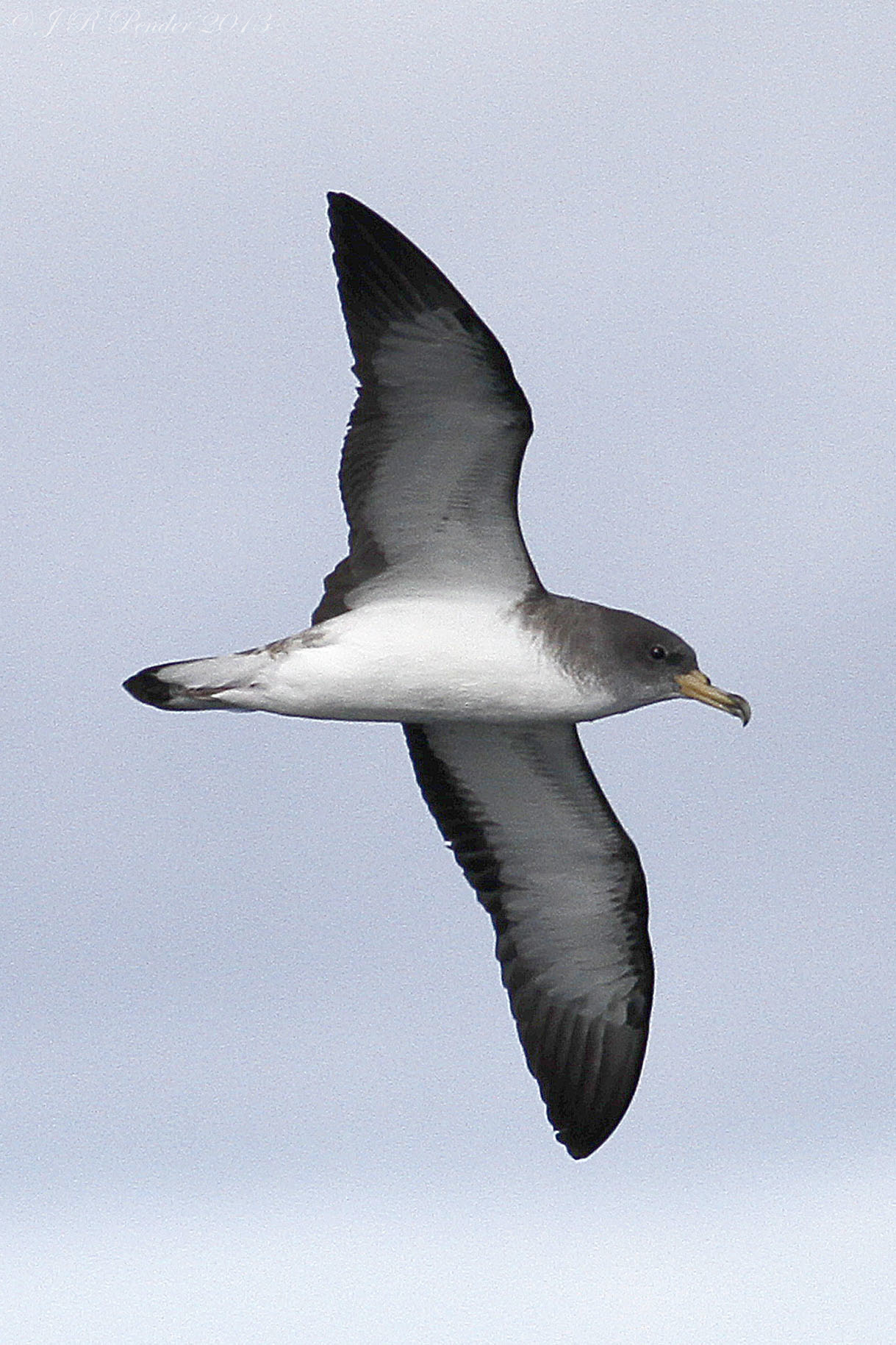
Cory's Shearwater, Scilly pelagic, Isles of Scilly (Photo: Joe Pender)

Great Shearwater, Scilly pelagic, Isles of Scilly (Photo: Joe Pender)
In Norfolk, photographs of the Titchwell scoter finally emerged after it was seen again on 27th and 28th, showing it to be a Common Scoter with a fairly extensive amount of yellow on the bill. The Black Duck was still at Ballylongford (Kerry) on 30th, while in the same county a female Surf Scoter was off Inch Strand. In North Yorkshire, the Ring-necked Duck was again at Brompton-on-Swale on 28th.
A first-summer Night Heron was discovered at Thornton Reservoir (Leics) on 31st, though it had been present at least five days since a 'small, streaky heron', reported as a possible Little Bittern, was seen there on Saturday 27th. Elsewhere, the immature was still at Old Moor (S Yorks) on 30th though it was proving as elusive as ever. Three Little Bitterns were still at Ham Wall (Somerset) throughout the week, with nine Great White Egrets seen at nearby Shapwick Heath on 31st — hopefully this is an indication of another successful breeding season. Elsewhere, post-breeding dispersal was well under way, with another dozen Great Whites reported from around England, while Cattle Egrets remained in Kent and Co. Antrim. A Black Stork was reported over Ilkeston (Derbys) on 29th, and the Glossy Ibis was still at Marloes Mere (Pembrokeshire) throughout.
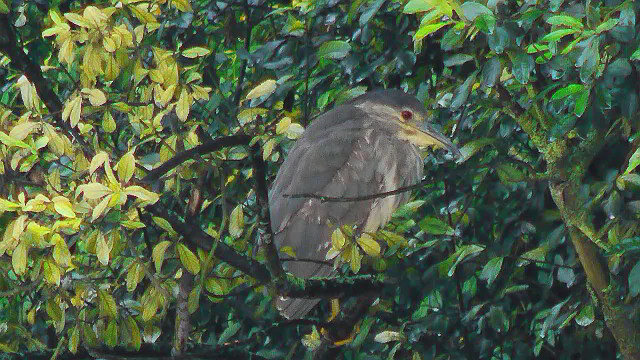
Night Heron, Thornton Reservoir, Leicestershire and Rutland (Photo: Alan Shaw)
A Black Kite flew over the Farne Islands (Northumberland) during the late morning of 30th and was closely followed by the islands' first Red Kite in the early afternoon! The Black later flew over nearby Bamburgh and was one of four reported this week: reports came from Barnby in the Willows and later Oxton (both Notts) on 27th, Cranford St. John (Northants) on 28th and near Cliffe (Kent) on 31st. Co. Donegal's Snowy Owl remained on Arranmore Island.
In Lincolnshire, a couple of convincing candidates for first-summer Baltic Gulls were noted near Elsham sporadically throughout the week, with both seen on 31st. Bonaparte's Gulls also remained on the Oare Marshes (Kent) and Heysham (Lancs) throughout, while a Gull-billed Tern at Scatness from 27th was a fantastic record for Shetland, and was also seen at the Pool of Virkie on 28th and 30th. The daytime haunt of Cheshire's Caspian Tern was discovered: the bird visited Rudyard Reservoir (Staffs) on 26th–29th, roosting daily at Acre Nook Sand Quarry until 29th when it flew off northeast from there.

Gull-billed Tern, Scatness, Mainland, Shetland (Photo: Steve Minton)
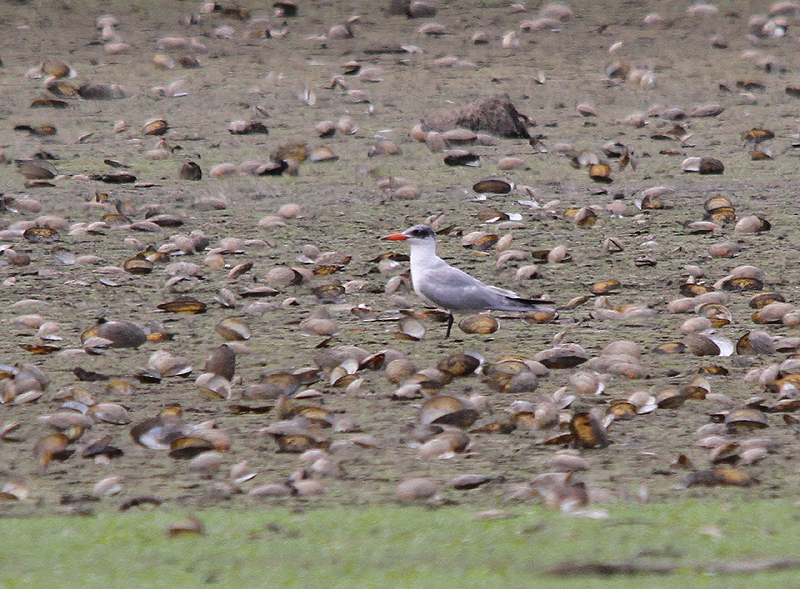
Caspian Tern, Rudyard Reservoir, Staffordshire (Photo: Steve Seal)
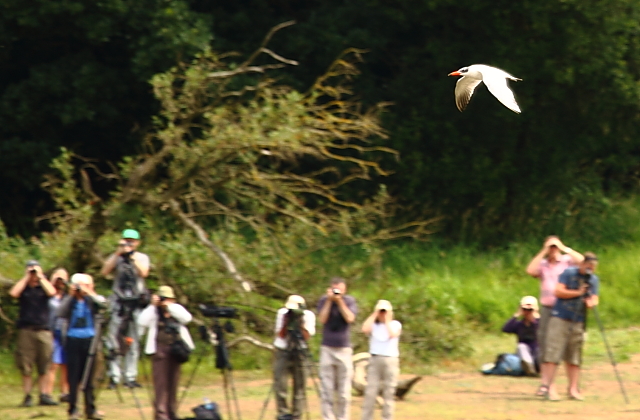
Caspian Tern, Rudyard Reservoir, Staffordshire (Photo: Jon Worthington)
Pick of the waders was a pretty Spotted Sandpiper at Alnmouth (Northumberland) on 27th–30th. A breeding-plumaged Long-billed Dowitcher arrived to join the Lesser Yellowlegs at the National Wetlands Centre (Carmarthen) from 28th; another of the latter was reported at Loch Ryan (Dumf & Gall) on 28th. Lincolnshire's Baird's Sandpiper was last seen at Frampton Marsh on 26th (video on the BirdGuides blog). The autumn's first Buff-breasted Sandpiper was on Berneray (Outer Hebrides) on 29th–30th, while seven Pectoral Sandpipers included new birds in Norfolk, Gwent, Devon and West Sussex, and a Grey Phalarope was seen at Sandbanks (Dorset) on 31st. A juvenile Spotted Crake was an excellent Northumberland record at East Chevington on 31st.

Spotted Sandpiper, Alnmouth, Northumberland (Photo: Frank Golding)

Baird's Sandpiper, Frampton Marsh RSPB, Lincolnshire (Photo: Trevor Williams)

Pectoral Sandpiper, Saltholme RSPB, Cleveland (Photo: David Aitken)
Long-billed Dowitcher, National Wetlands Centre, Carmarthen (Video: Barry Stewart)
Unsurprisingly for the last week of July, passerine action was at a premium (Two-barred Crossbills aside). Fair Isle maintained its monopoly of unseasonable warblers: the male Western Subalpine was still there all week and was joined by an Icterine Warbler on 26th–30th and a Marsh Warbler on 27th. Meanwhile, over on Skye, a Rose-coloured Starling was seen twice in Broadford on 31st.
The week's insects included a Long-tailed Blue found in a kitchen in Dawlish (Devon) on 25th, which was released in front of an appreciative crowd at nearby Dawlish Warren the following day. However, the circumstances of its discovery may well suggest that it had arrived as a pupa in a food item! A Desert Locust was a surprise in Sudbury (Suffolk) on 27th, though Red-veined Darter numbers dwindled this week.

Long-tailed Blue, Dawlish Warren NNR, Devon (Photo: John Marchant)
And, given the wonderful array of images being uploaded to our various insect galleries at present, we thought it appropriate to showcase a few more images before the summer is out.

Golden-ringed Dragonfly, undisclosed site, Highland (Photo: Antony Taylor)

Norfolk Hawker, Strumpshaw Fen RSPB, Norfolk (Photo: Bryan Wright)

Common Darter, Grimsby, Lincolnshire (Photo: Gordon Bowes)

Large Skipper, Sandridge, Hertfordshire (Photo: Andrew Steele)

Silver-studded Blue, Prees Higher Heath, Shropshire (Photo: John Starkey)

White Admiral, Dunwich, Suffolk (Photo: Jon Evans)

Marsh Fritillary, Bentley Wood, Wiltshire (Photo: Craig Richardson)
Photo of the Week
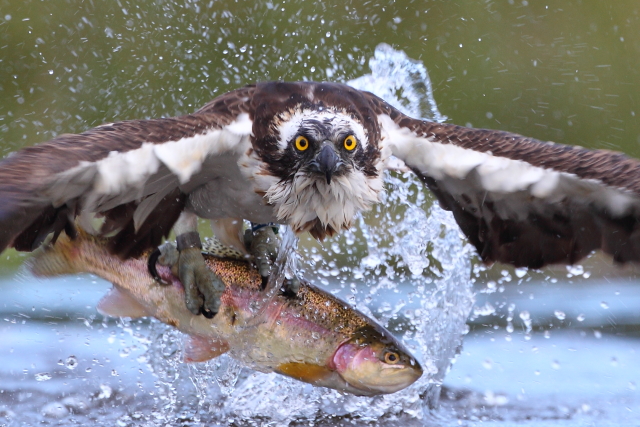
Osprey, Rothiemurchus, Highland (Photo: Darran Rickards)
Although the hides at Rothiemurchus in Scotland are set up with the intention of allowing photographers to capture images of Ospreys catching fish, visits from these (wild) birds of prey can be few and far between. Photographers therefore need to be prepared to put in long hours to get photo opportunities and need to react with speed and control when the key moments arrive. This week, Darran Rickards nailed one such opportunity to bag a well-deserved first Photo of the Week. This type of image is particularly effective when the bird is approaching head-on and when the shot is taken mid-action from a low angle. Darran ticked all these boxes and also included a clear view of the unfortunate fish impaled on the Osprey's talons, water splashes adding to the sense of action. A tight crop with those yellow eyes on the centre-line complete the picture.
Other Notable Photos

Redstart, Aviemore, Highland (Photo: Bill Doherty)

Tawny Owl, Countesthorpe, Leicestershire and Rutland (Photo: Paul Riddle)

Kingfisher, Loch Ken, Dumfries & Galloway (Photo: Alan McFadyen)
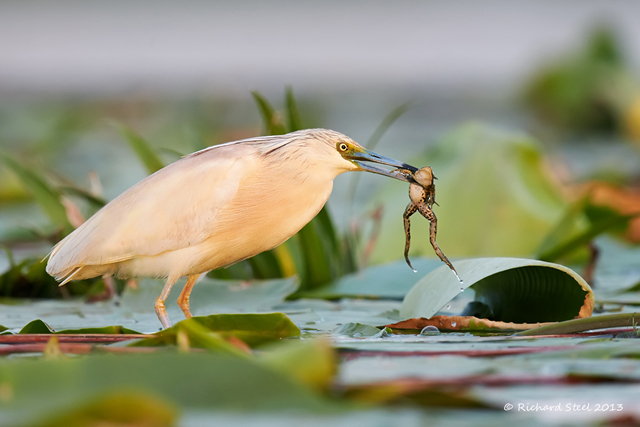
Squacco Heron, Romania (Photo: Richard Steel)
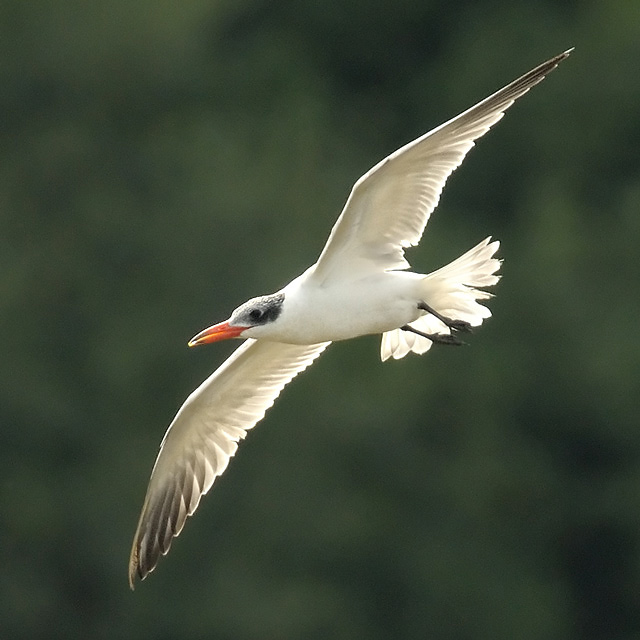
Caspian Tern, Rudyard Reservoir, Staffordshire (Photo: Ian Curran)

Cory's Shearwater, Scilly pelagic, Isles of Scilly (Photo: Joe Pender)

Cuckoo, undisclosed site, Suffolk (Photo: Neil Rolph)

Little Owl, undisclosed site, Leicestershire and Rutland (Photo: Adey Rowley)

Two-barred Crossbill, Sumburgh, Mainland, Shetland (Photo: James Wood)

Great Skua, Handa Island SWT, Highland (Photo: Stephen Burch)

Reed Bunting, undisclosed site, Lancashire (Photo: Tom Charles)


